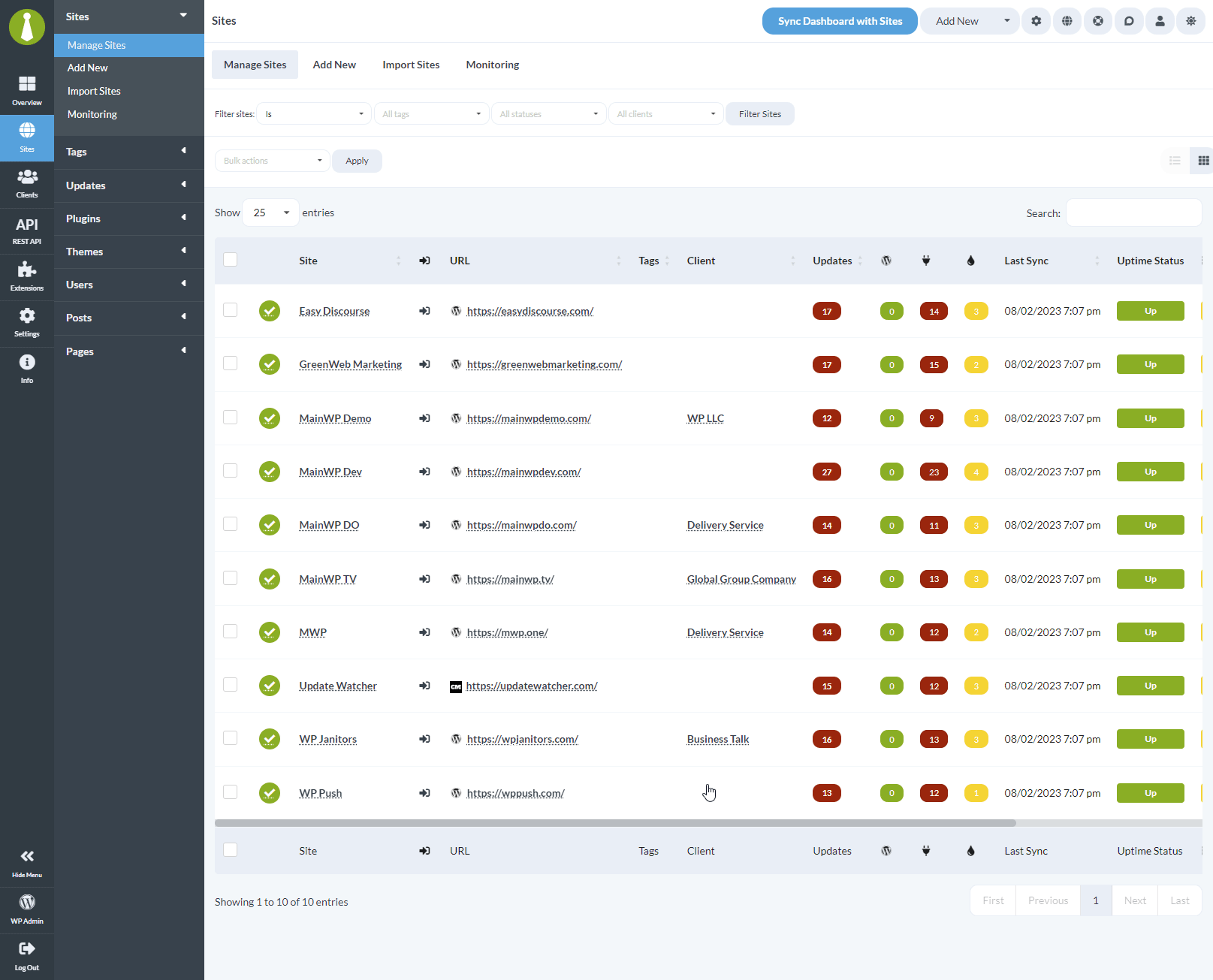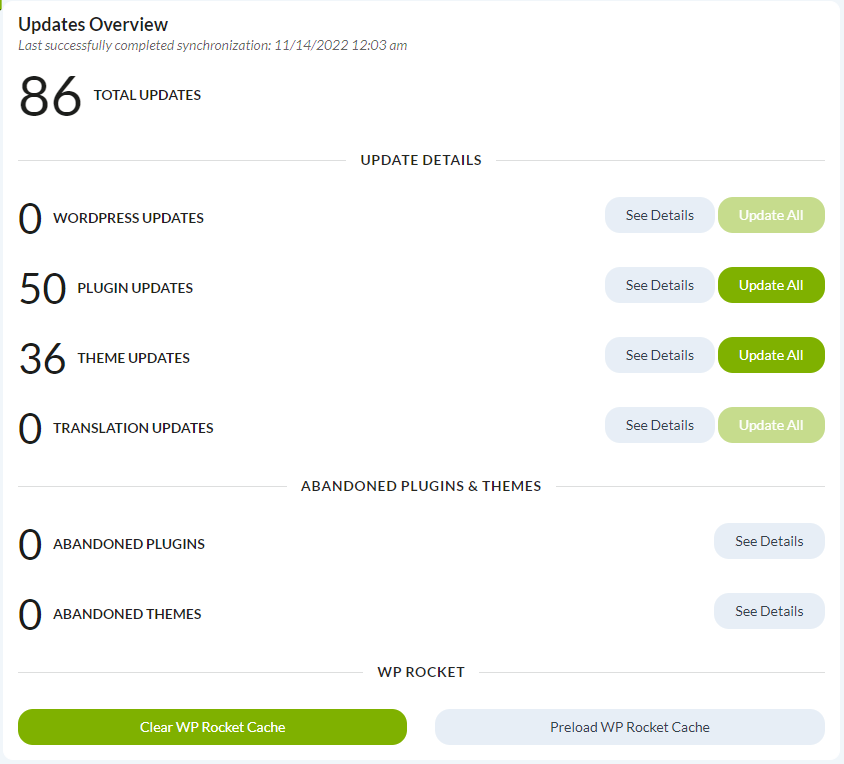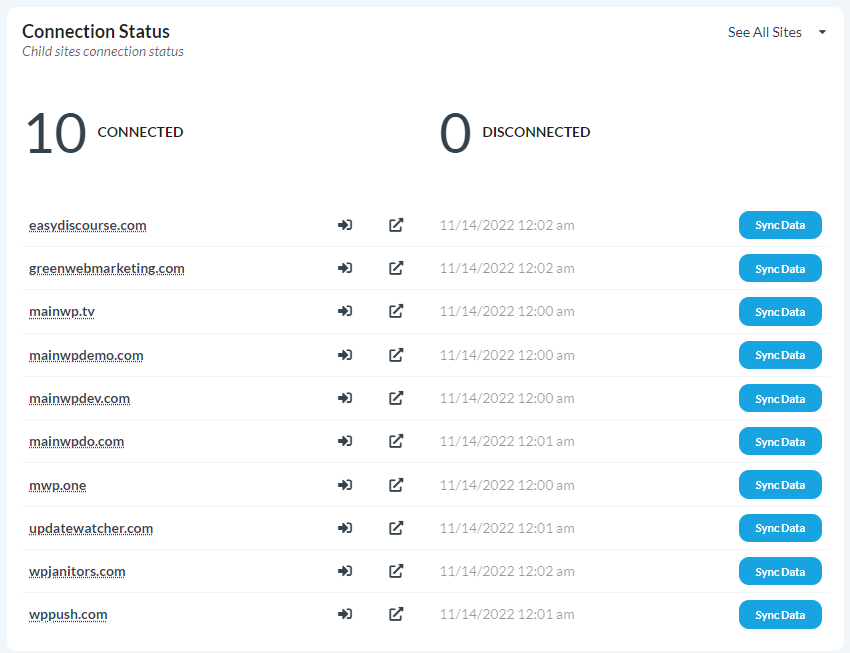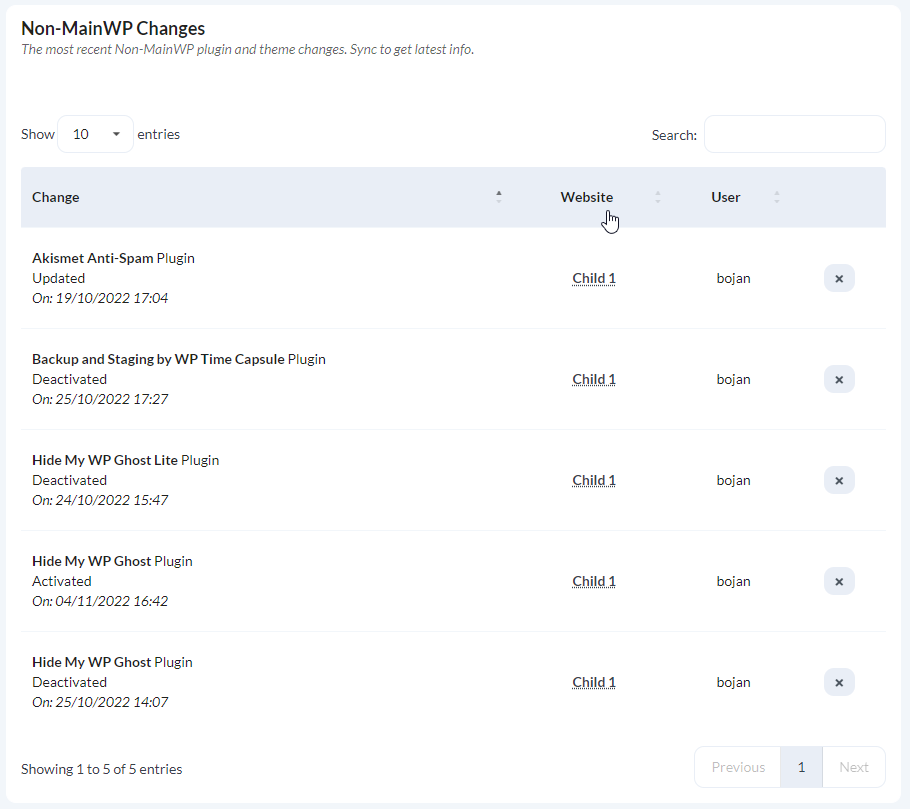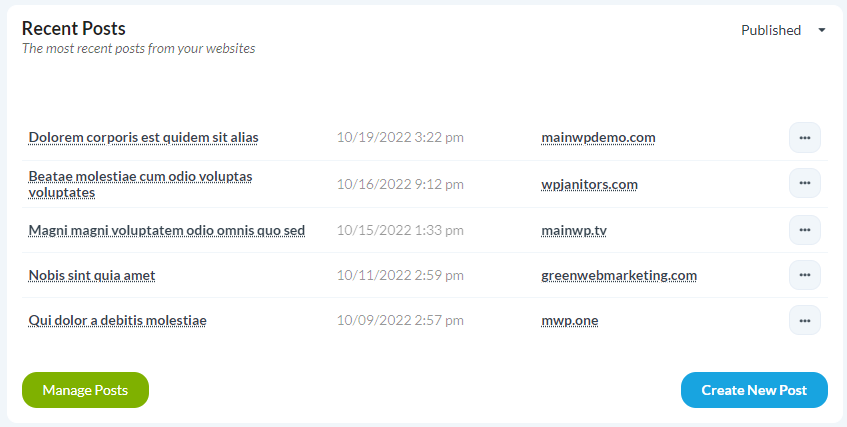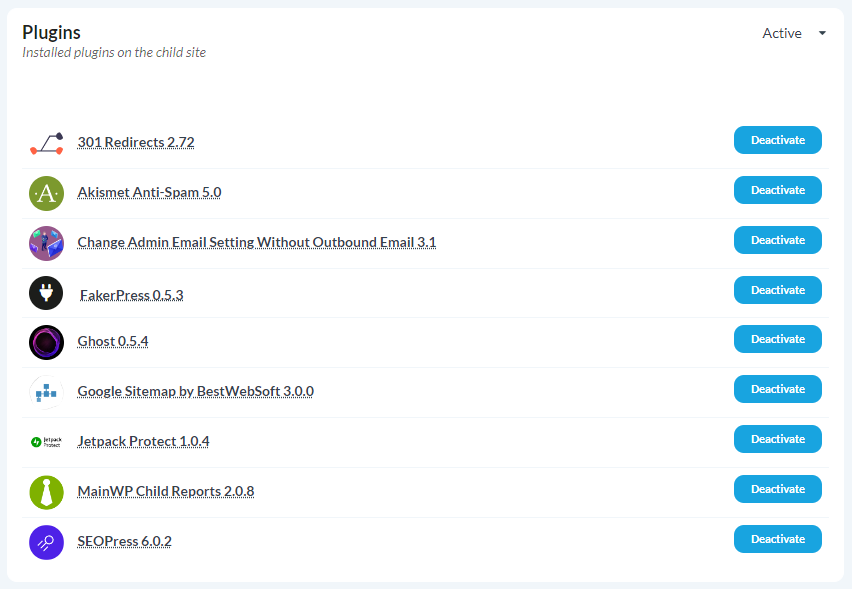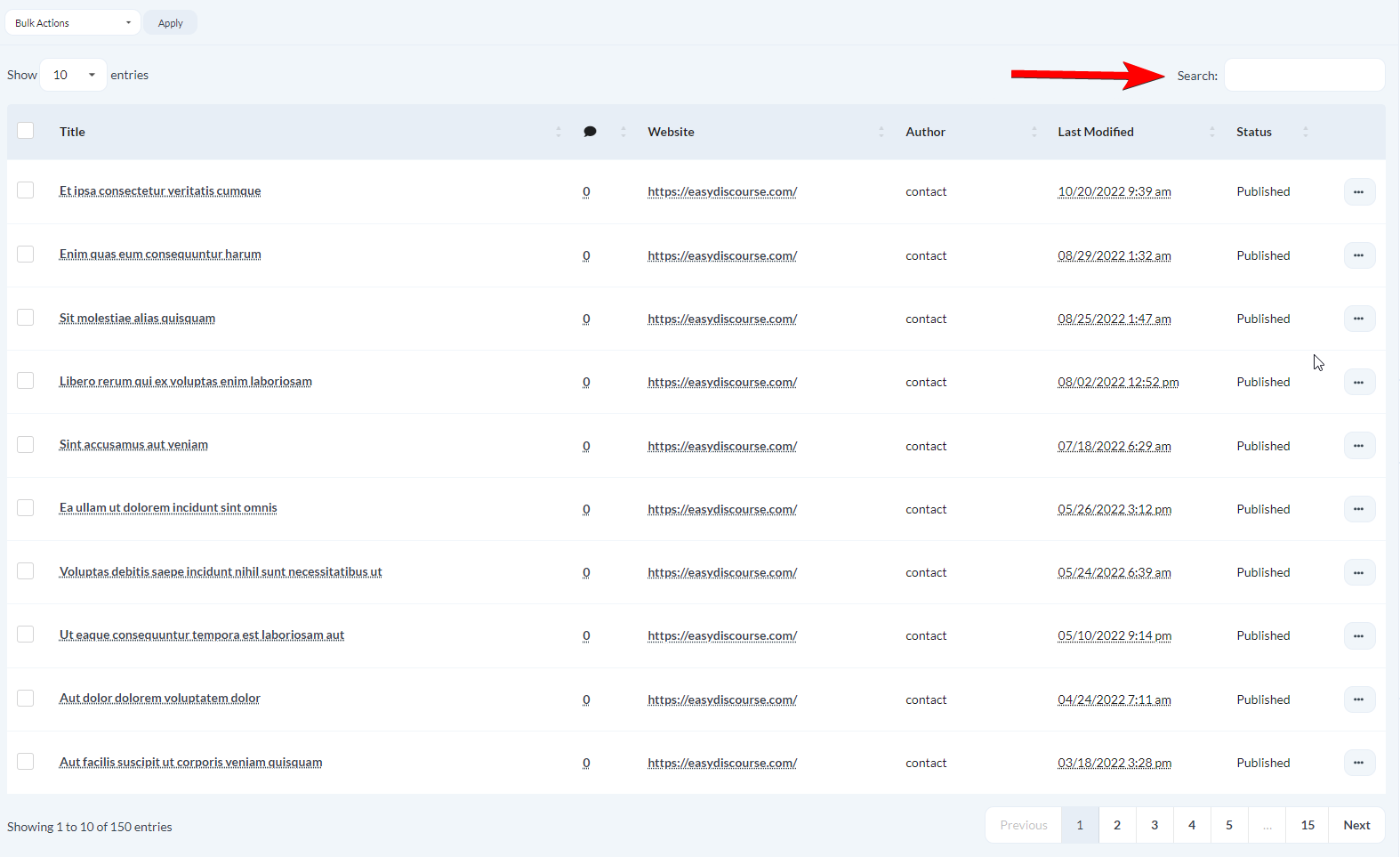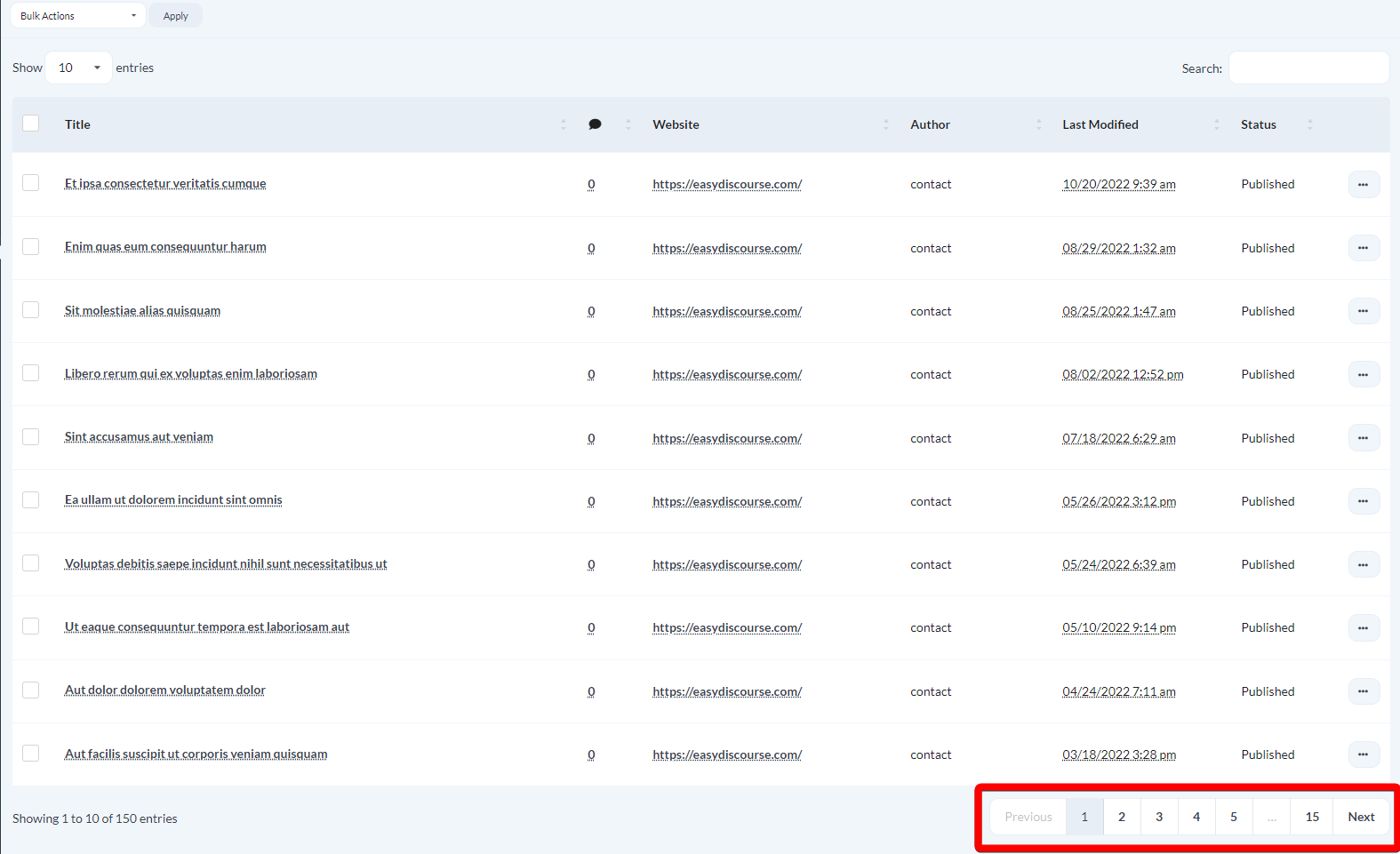Widgetized Pages
The MainWP overview pages are one of the most important ones in the MainWP Dashboard plugin, and they provide you with an overview of your Child Sites and the most needed actions for maintaining them.
A widgetized page rounds up multiple Widgets that will help you control your connected websites.
Widgetized Page Layout
New flexible widgets were introduced in version 4.5. Considering some JavaScript is likely cached in your browser, to avoid visual issues, please try performing a hard refresh (Ctrl + Shift +R / Command + Shift + R), or clearing your browser cache (Chrome, Safari, Firefox).
Reorder Widgets
To customize the order of widgets, simply Drag & Drop widgets, and the MainWP Dashboard will remember the order for the next time you visit the page.
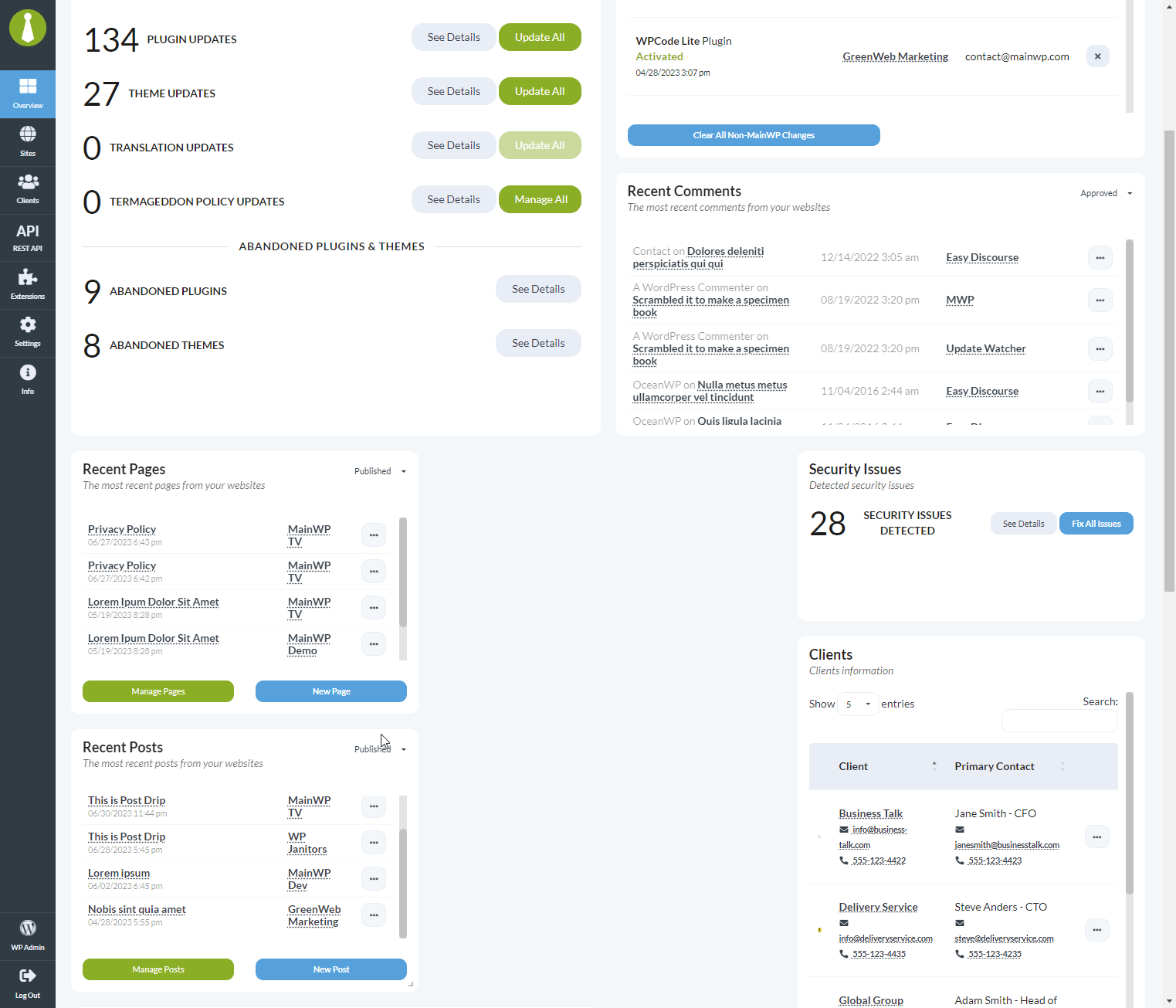
Resize Widgets
Every widgets can be resized. Simply grab the lower-right corner and drag to the desired size.
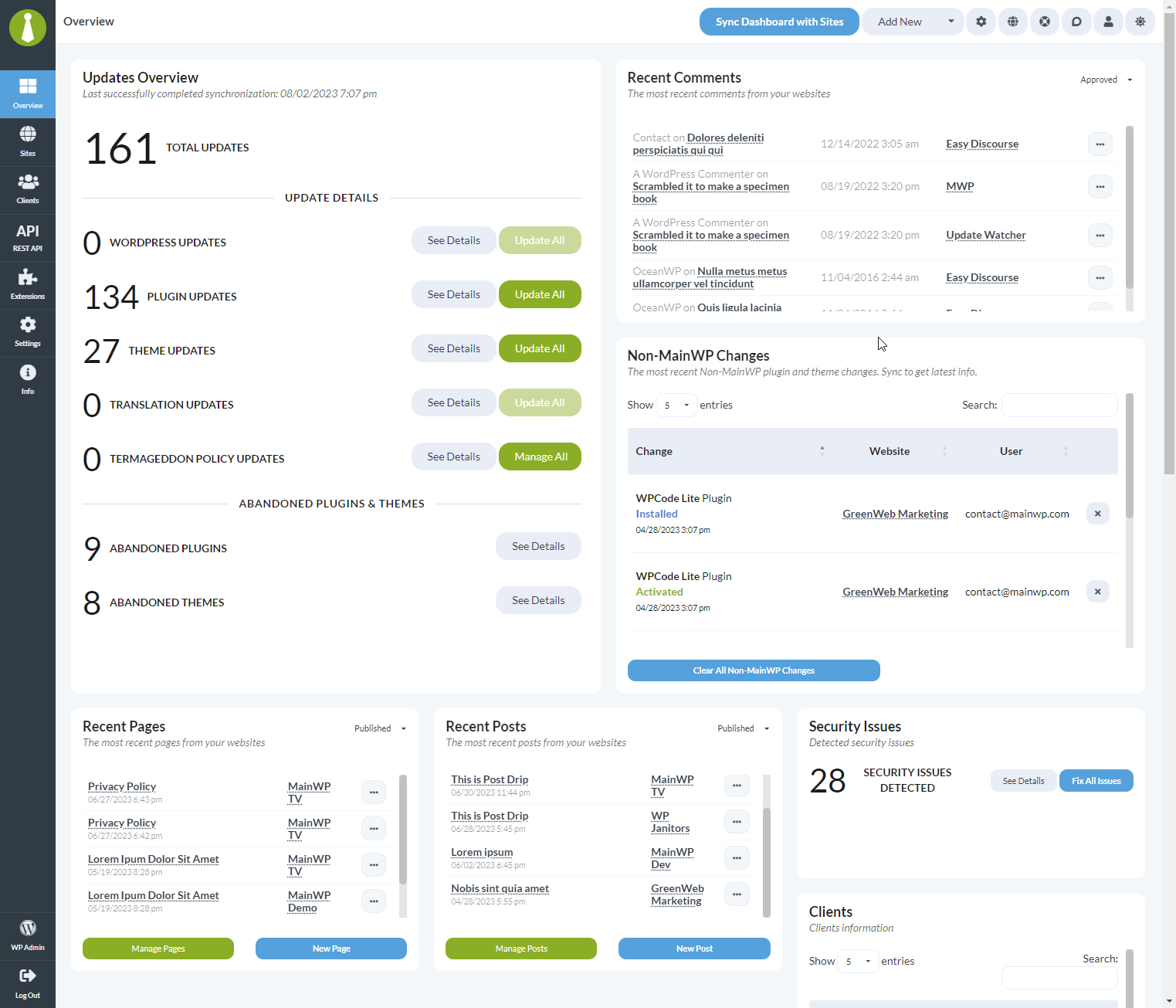
Enable/Disable Widgets
To add widgets or remove unwanted widgets, open the Page Settings menu check or uncheck the widgets in the list, and click Save Settings.
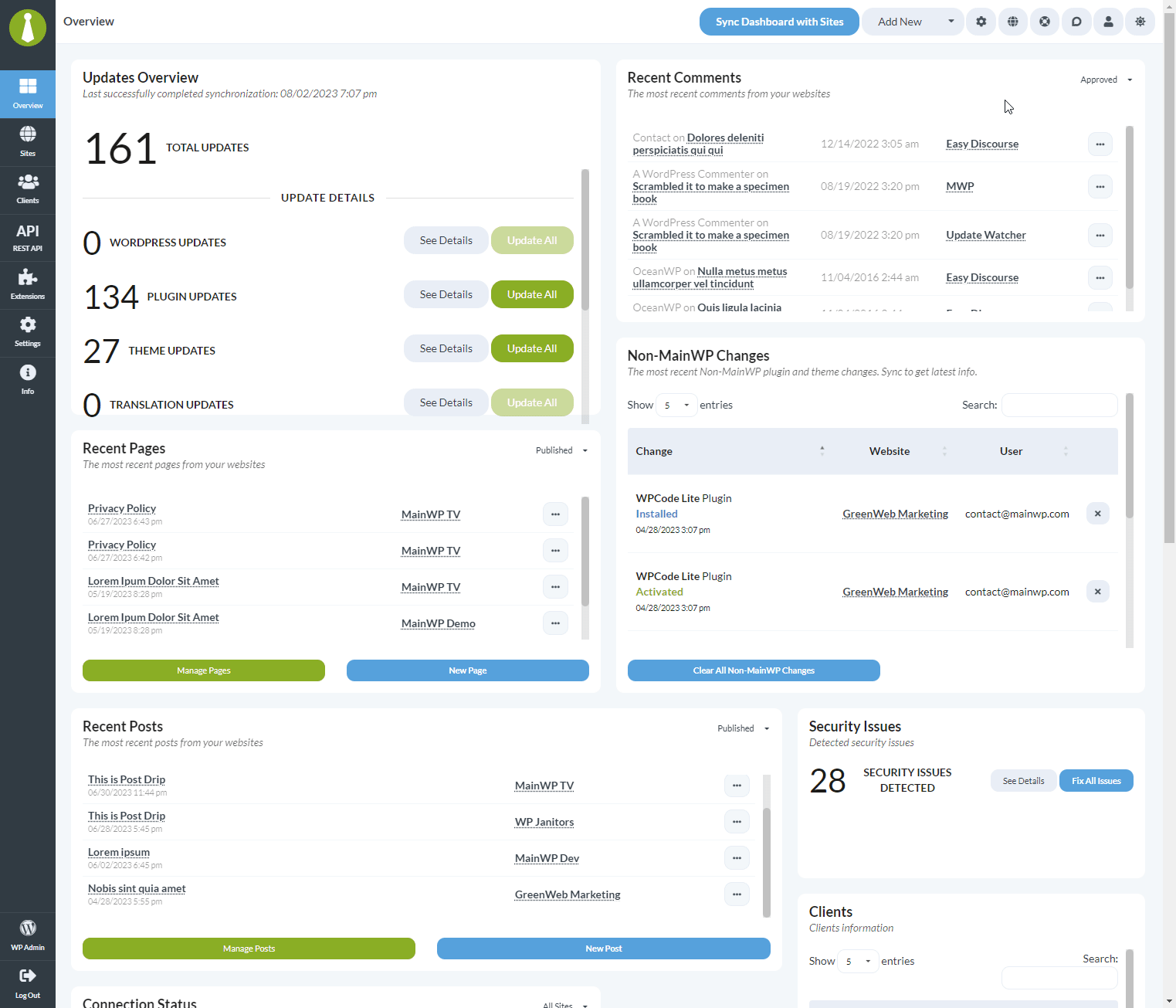
Widgets
Update Overview
The Update Overview widget can be split into two sections
- Updates – includes updates for WordPress Core, Plugins, Themes, and Language Packs (if enabled in MainWP Settings)
- Possibly Abandoned Plugins and Themes – displays a list of possibly abandoned plugins and themes.
The updates section is divided into multiple separate sections:
- Total updates – allows you to update everything across your Child Sites
- WordPress updates – allows you to update all WordPress Core files
- Plugins updates – allows you to update all plugins on all your child sites
- Themes updates – allows you to update all themes on all your child sites
- Translations updates – allows you to update all translations on all your child sites
Connection Status
This widget allows you to see the current status of your Child Sites and if they have been synced recently.
On the Individual Child Site Dashboard, this widget shows info only for that one Child Site.
By default, the widget will show little info. To see details, use the dropdown menu in the top-right corner of the widget.
Non-MainWP Changes
This widget allows you to see the most recent non-MainWP changes that were done directly on the child sites and not through the MainWP Dashboard. The changes include Plugin and Themes installations, updates, activations and deactivations, and WordPress Core updates.
- The first column shows what change occurred and when.
- The second column shows on which child site it occurred
- The third column shows which user made the change
- You can dismiss any of the tracked change from the list by clicking the X icon
At the top of the widget, you can select from the dropdown menu how many changes you wish the widget to show, and you can search for a particular change in the search field in the top right.
Recent Posts
This widget allows you to see Posts that have been created recently on your Child Sites. It shows the last 5 Posts.
- The first column shows Post Title
- The second column shows the post published date
- The third column shows the child site friendly name
- The actions menu provides the following options:
- Unpublish – will unpublish the post (change the post status to draft)
- Edit – shortcut to the Edit post screen
- Trash – deletes the post and but it doesn’t delete it permanently
- View – opens the post on the Child Site front-end
- Publish (available only for Draft and Pending posts) – publishes the post
- Restore (available only for Trashed posts) – restores the post to a previous status
- Delete Permanently (available only for Trashed posts) – deletes the post permanently
The navigation at the top of the widget (dropdown menu) allows you to toggle between Post Statuses.
The Create New Post button will lead you to the MainWP > Posts > Add New page, where you can create a new post on your Child Sites.
On the Individual Child Site Dashboard, the widget will display only the last five posts from just that one Child Site.
Recent Pages
This widget allows you to see pages that have been created recently on your Child Sites. It shows the last 5 Pages.
- The first column shows Page Title
- The second column shows the page published date
- The third column shows the child site friendly name
- The actions menu provides the following options:
- Unpublish – will unpublish the page (change the page status to draft)
- Edit – shortcut to the Edit page screen
- Trash – deletes the page and but it doesn’t delete it permanently
- View – opens the page on the Child Site front-end
- View All – lists all pages from the Child Site
- Publish (available only for Draft and Pending pages – publishes the page
- Restore (available only for Trashed pages) – restores the page to a previous status
- Delete Permanently (available only for Trashed pages) – deletes the page permanently
The navigation at the top of the widget (dropdown menu) allows you to toggle between Page Statuses.
The Create New Page button will lead you to the MainWP > Pages > Add New page, where you can create a new page on your Child Sites.
On the Individual Child Site Dashboard, the widget will display only the last 5 pages from just that one Child Site.
Security Issues
This widget provides you a brief overview of security issues that the MainWP Dashboard detects on your Child Sites. In the initial state of the widget, you can see a number of detected security issues, the Show Sites link that will expand the widget to show you more details, and the Fix All Issues button that will attempt to fix all detected security issues on all your Child Sites.
After expanding the list, you will be able to see more details.
- The left column displays the Child Site friendly name. If you click a Child Site name, the link will lead you to the Security Issues page, where you can see all detected issues and fix them one by one.
- The middle column shows a number of detected issues on the Child Site
- The right column provides you a button to Fix All security issues on the Child Site
On the individual Child Site Dashboard, the widget will display only security issues for only that Child Site.
Plugins
This widget will show you all installed plugins on the Child Site.
The left column shows plugins names along with the plugin version. By clicking a plugin name, you can see the plugin information.
The right column provides you the ability to
- Deactivate (available only for active plugins) – deactivates the plugin on the Child Site.
- Activate (available only for inactive plugins) – activates the plugin on the Child Site.
- Delete (available only for inactive plugins) – deletes the plugin from the Child Site.
Use the widget navigation to switch between Active and Inactive plugins.
Themes
This widget will show you all installed themes on the Child Site.
The left column shows theme names along with the theme version. By clicking a theme name, you can see the theme information.
The right column provides you the ability to
- Activate (available only for inactive plugins) – activates the plugin on the Child Site.
- Delete (available only for inactive plugins) – deletes the plugin from the Child Site.
Use the widget navigation to switch between Active and Inactive themes.
Navigation
MainWP Dashboard main navigation panel appears on the left side and provides quick access to all MainWP sections:
- Overview
- Sites
- Clients
- Cost Tracker
- Insights
- REST API
- Extensions
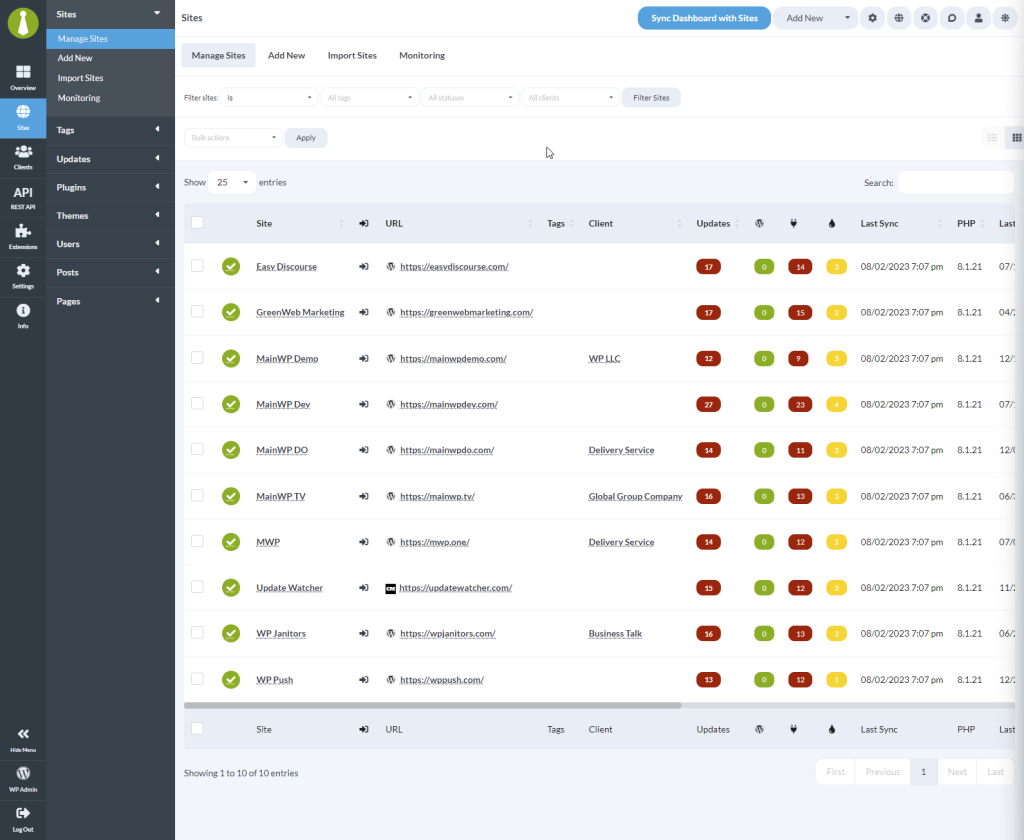
And at the header menu element you can find:
- Settings
- Info
- Go to WP Admin (the special button that gets you back to the normal WP Admin section of the site.)
- Log out
Along with the Main Navigation, MainWP Dashboard provides a Page Navigation (Tabs), which varies from section to section. Each MainWP section has a different Page Navigation. Also, there are sections without tabs.
Tables
In almost all sections, MainWP uses tables powered with the DataTables advanced interaction controls.
Actions Menu
In almost all MainWP Tables, in the far right column, you can find the Actions menu.
Sorting Options
By clicking the table column header, you can sort table data.
Columns Order
The MainWP Plugin allows you to set custom column order so you can set tables as per your preferences. Just drag & drop the column where you need it.
The MainWP Plugin will remember the order, so this adjustment doesn’t need to be repeated on each page load.
Bulk Actions
The bulk action menu is always located in the top-left position above a table. To use bulk actions, select all items in a table where you want to apply an action, select the wanted action, and click the Apply button.
Search
In the top-right, you can use the Search field to filter table data.
Pagination
If a table contains too much data to be displayed on a single page, the MainWP will provide the table pagination so that you can go through the data page-by-page.
Display Options
If you want to adjust several items (rows) in a table, use the dropdown menu to set the wanted number if provided.
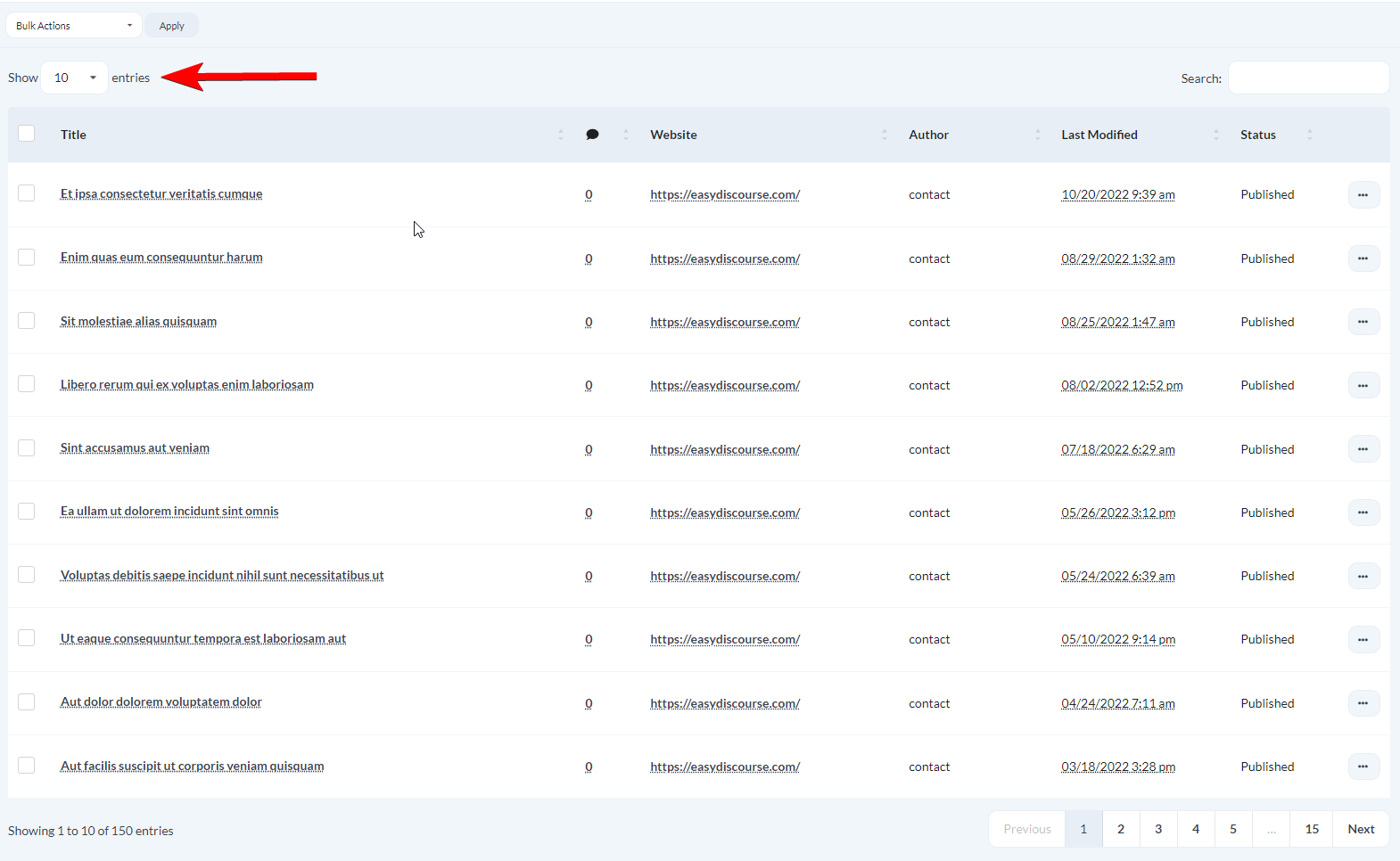
Manage Plugins and Themes Table Features
With version 4.3, MainWP introduces design changes to the Manage Plugins and Manage Themes tables.
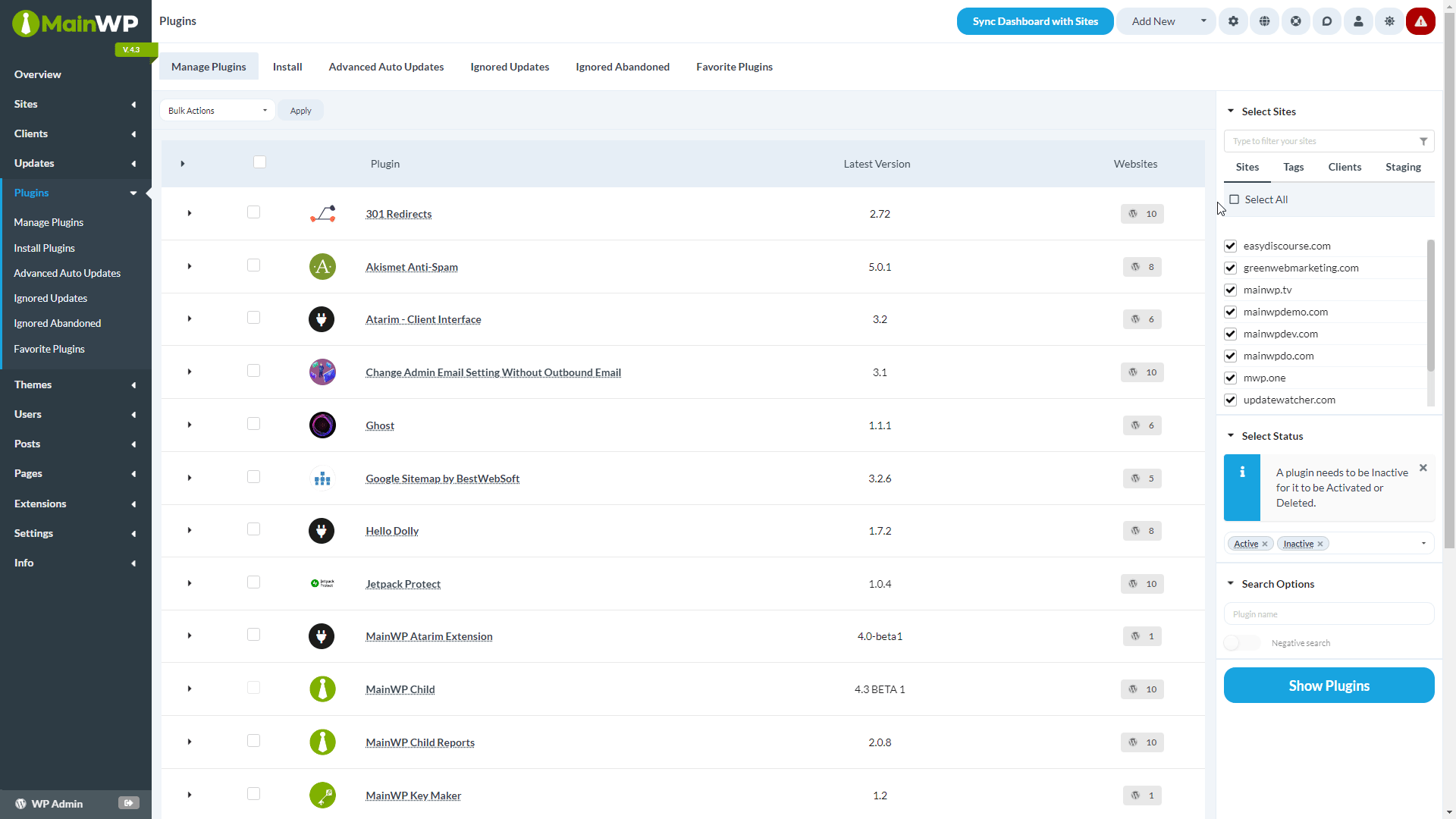
The new design introduces icons for both plugins and themes for quicker identification, and you can the number of child sites on which the plugin or theme is installed without expanding the row.
You can select the child sites individually, or select all which have a particular plugin or theme installed.
The plugins or themes can be Activated, Deactivated, or Deleted one by one, or in bulk.
Select Sites
Select Sites is a metabox that is used in almost all MainWP Sections, and it’s very important. Nearly every action performed in the MainWP Dashboard will require you to select Child Sites for it. For example:
- Searching for Posts, Pages, Plugins, Themes, Users,…
- Publishing new content on your Child Sites
- Installing new Plugins and Themes on your Child Sites
It lists all websites that are connected to your MainWP Dashboard.
To select a site, check the checkbox in front of the Child Site name. To un-select it, cancel the checkbox selection.
Sites that are disconnected will appear as disabled in the list, and the selection won’t be allowed. The reason for this is very simple, MainWP Dashboard can’t update a site that is not properly connected.
By understanding it better, you will be able to save some time in your daily routine in using your MainWP Dashboard.

Selection By Site, By Tag, By Client
You can select sites by Site, by Tags, and by Client. In the by Site mode, you can select all, one or multiple individual sites, and in the by Tags or Clients, you can select all, one, or multiple individual Tags or Clients. Selecting a Tag or Client means that all sites that have been added to the Tag or Client will be included in the selection.
Quick Selection
Above the sites in the Select Sites metabox, you can find the select All / None quick selection buttons.
Sites Filter
At the top of the metabox, type in the name of a Child Site that you want to find and select, and sites will get filtered so you can easily find the wanted website. This feature comes in handy when managing a large number of Child Sites.
Sidebar Accordion
MainWP Sidebar element contains a few sections with different option groups.
In most cases, it’s the Select Sites option, Search parameters options, and at the bottom, a section with provided actions.

Sections that are not used often can be collapsed to get a cleaner interface. When needed, sections can be expanded.
Individual Site Mode
A majority of the features provided by the MainWP Plugin can be controlled on a global level (for all Child Sites) and for Individual Child sites.
Single Site Overview
Individual Child Site Mode enables you to control settings per child site and also to monitor data related to a specific child site.
To access the Individual Child site mode,
- Go to the MainWP > Sites > Manage Sites page
- Locate the wanted Child Site
- Under the column Site, click the Site Name
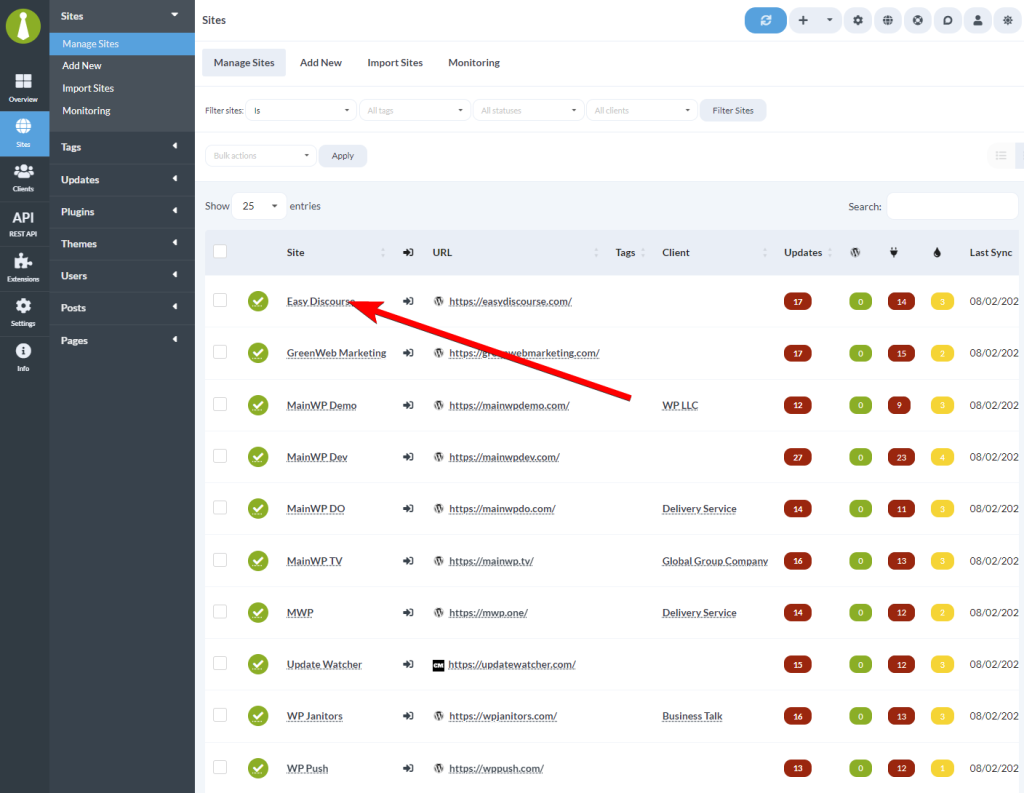
Once the Overview page is opened, new tabs will be available:
- Overview – Individual Child Site Overview displays information for the individual site and provides actions that can affect only that certain site.
- Edit – This allows you to edit the Child Site settings.
- Updates – This allows you to manage available updates for the Child Site
- Email Settings – This allows you manage email notification settings for the Child Site
- Security Scan – Provides an overview of the Child Site security issues and reports
- If you have MainWP Extensions installed, their respective tabs will be shown here as well
Page Settings
On most MainWP Dashboard pages, the Page Settings menu is available, and it provides the ability to change certain settings for that particular page.
In sections where it’s available, you will notice the button at the top-right of the page. Keep in mind that the settings will be specific for that particular page.
